This winter is turning out to be a big repotting year for me. Throughout the season, three themes are guiding the work.
1. Work in Batches
To get through as many trees as quickly as I can, I’m repotting in batches.
When the trees are young, I’ll prepare the pots, remove the trees from their containers, do the root work, and then set them all in the new containers.
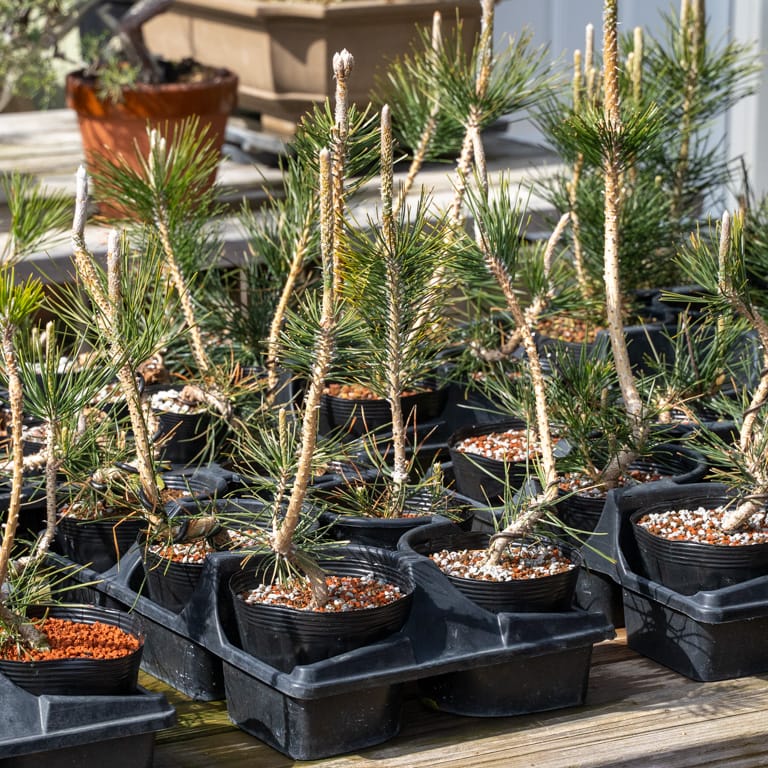
Freshly repotted two-year old pines
For older trees, I’ll try to repot groups of similar species and stages of development together as I’m likely to need the same tools, containers, and soil mixes. In addition to the practical advantages, I find it easier to get into a groove and pick up on details of how similar trees grow when working this way.
2. Get the timing right
This is the first time in years I’ve been able to be strategic about when I repot. My general approach is to chip away at groups of conifers, ideally right as the buds begin to swell, and then I drop whatever I’m doing to repot deciduous trees when I see the buds start to open.
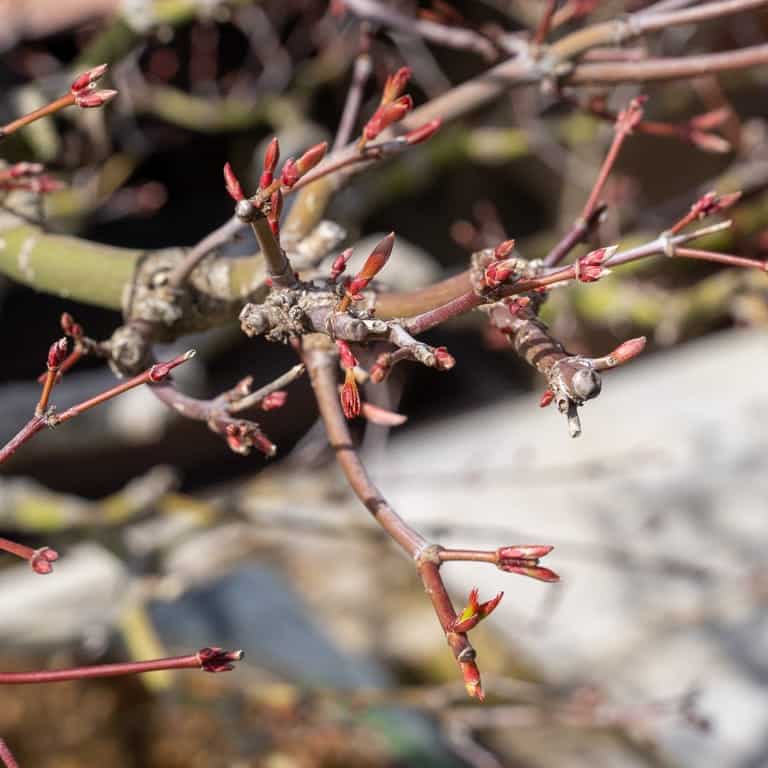
Buds starting to open on Japanese maple
The main benefit of repotting at the ideal time is that I can be more aggressive with the root work without stressing the tree as much as I would by doing the same work one month sooner (or later).
This can be challenging for anyone with lots of the same species in the garden as they tend to start growing at the same time. Because I have a lot of pines, I often repot them before I see buds swelling as I’d rather repot early than several weeks too late.
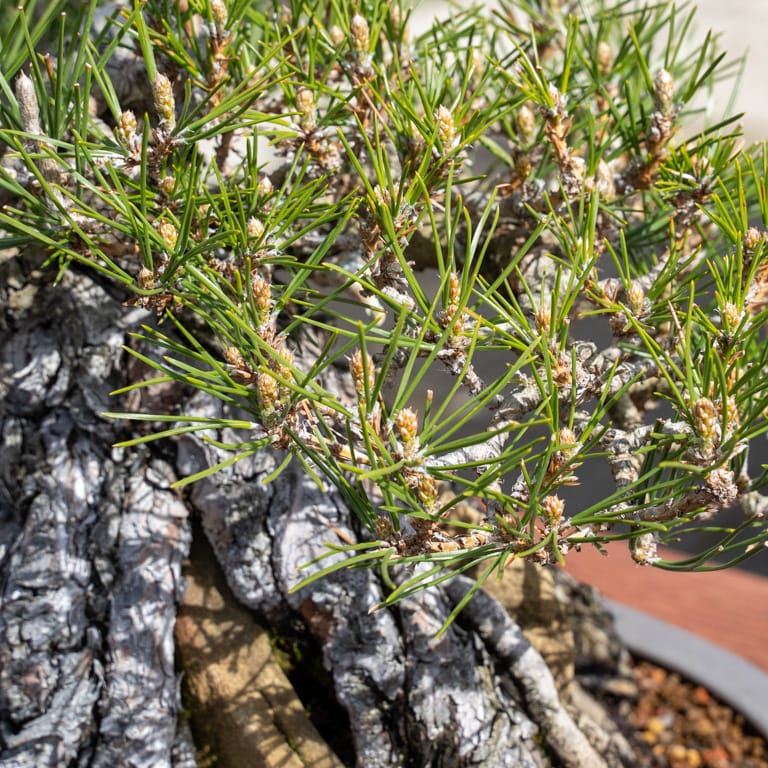
New buds on black pine – about two weeks after the ideal repotting time
3. Make big moves when necessary
Removing high percentages of soil can be stressful for any bonsai and must be done with care. That said, not removing enough old soil can prevent trees from regaining health and growing with vigor.
This year, I’m not hesitating to make big cuts when necessary or dig out pockets of old soil when I find them.
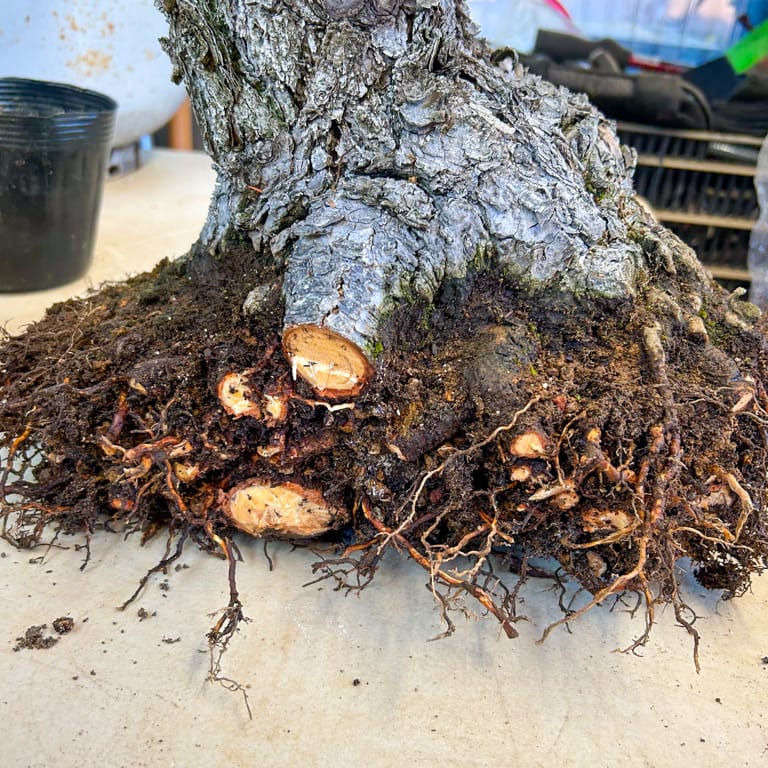
Large cuts on a field-grown black pine
Even good soil can break down and become compacted over time. For trees in the middle stages of development, I’m finding lots of opportunities to clear out such compacted soil so the tree can benefit from good soil in the core of the root ball.
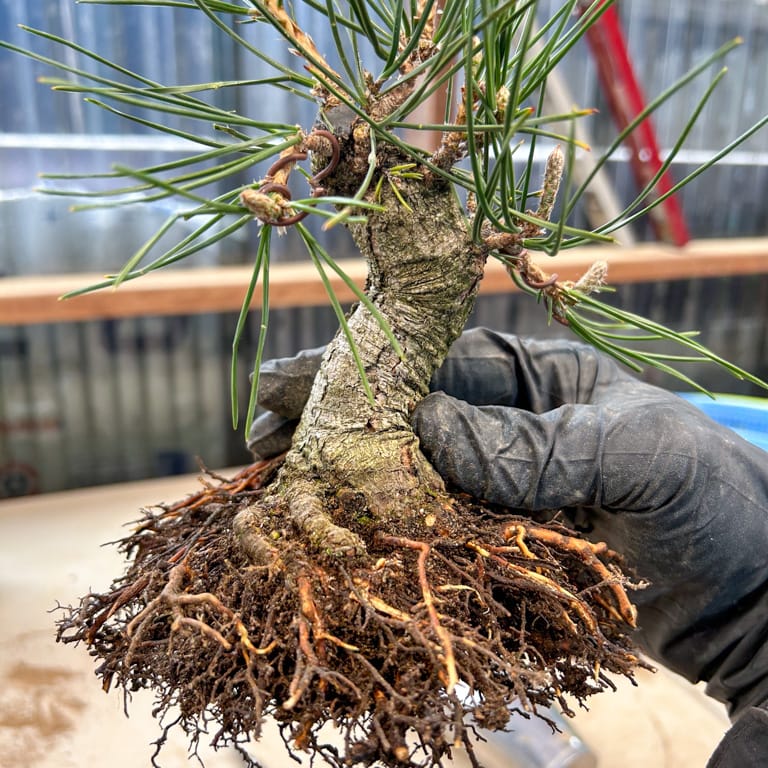
Young pine after removing compacted soil
I won’t be surprised if I’ve been too aggressive on a few trees this year, but I’m curious to learn more about the exact amount of root work I can get away with and still get good growth from the tree in spring.
I’m also planning to give some of these trees a break from additional work until they’ve recovered. When I remove lots of old soil or reduce a large percentage of the root ball I make a mental note to let the tree grow freely until it’s back on track and strong enough for additional work.
That’s the goal, anyway, and I’m sticking to it as best I can this year.
Are any themes helping you get through this year’s repotting season? And for those who haven’t started repotting yet, do you have goals for what you want to accomplish when it’s time to repot? Feel free to share in the comments below.
